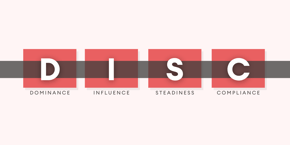With innovative technologies at hand, businesses can still move forward and get the job done even in unprecedented times.
These are no doubt unprecedented times. With a global pandemic in full swing, the Coronavirus COVID-19 has forced economic activity to a grinding halt. As social distancing has effectively crippled the global service industries, while disrupting the massive global manufactured goods supply chain, the U.S. economy is taking a major hit.
This isn't a state of emergency.
Sudden stops in the economy have been normal throughout history as natural disasters have wiped out towns, cities, and even states — think — California wildfires charred roughly 270,000 acres in 2019, the smallest number since 2011 while using $4.7 billion from its emergency fund in the last 10 years to fight fires. Still, it’s not comparable to what we’re currently experiencing in China, Europe, and the United States, which are all being caught in a falling global economy.
As more and more companies close their doors and heed the social distancing warning, most businesses will have to contend with finding new and creative ways to conduct business. One thing is for certain, now is not the time to disengage your workforce.
Necessity is the mother of invention.
In light of social distancing and working remotely, if sales-oriented businesses are not already focusing on new technologies to connect with customers or prospects, they should be. There’s a saying attributed to the inventor, Alexander Graham Bell, “When one door closes, another opens, but we often look so long and so regretfully upon the closed door that we do not see the one which has opened for us.”
In 2008, the U.S. experienced a subprime mortgage crisis that led to an asset bubble in housing, eventually plummeting the country into a recession. While certainly not on the scale of a pandemic, the side effects led to a decrease in new home construction, home foreclosures, job loss, and skilled laborers searching for a new means to earn a living.
Businesses had to find their way back into the markets and workers needed to reinvent themselves. It was a time of uncertainty, much like now. Businesses looked to new technology innovations like iPhone 3G, notebooks, and netbooks. Pocket cameras went from recording standard-definition video to HD. Flash memory gave new life to technology replacing hard disk drives. These are just a few of the technologies that in some cases are now mainstays of consumer electronics and other components of business.
Fast forward to 2020, not only has the housing market rebounded since 2008, skilled labor jobs have come back, along with new technologies like the Internet of Things (IoT) found in today’s connected homes. Think of all the new products that feature a broad range of connectivity for homes from sensor solutions, connected home appliances, voice control devices, lighting, HVAC, security, and more.
The business has continuously found ways to leverage technology to help them get out of situations like recessions and housing bubbles. New cloud-based apps help mortgage companies generate faster online loan applications using a desktop or mobile. Most new homes come with smart technologies, even skilled laborers like HVAC techs are using digital tools and augmented reality to focus on and solve complex problems faster, easier, and remotely.
Making sales technology that can help businesses.
As many companies in the U.S. have sent their employees home, one common denominator still stands — business must go on. No doubt technology will once again play a large part in shaping how remote employees will connect with customers and explore new business prospects. Technologies like biometrics, autonomous driving, artificial intelligence, and Bitcoin are slowing integrating into the products and services we use.
One area that is seeing dramatic changes in business analytics. Through the use of sales intelligence technology, sales-i helps manufacturers, distributors, and wholesalers leverage customer sales analytics so they can make insight–led, swift, sound business decisions based on current data and pre-set key performance indicators (KPIs). The ability and need to have ubiquitous, relevant data around customer buying patterns, inventories, seasonal campaigns, product gaps, cross-sell opportunities, to overall sales performance is vital to businesses. Accessed via smart device or desktop, sales-i allows sales professionals to see instantly what’s working and what’s not. A perfect tool that can be used remotely or while socially distancing in your home office or kitchen table.
Stay close to your customers.
The coronavirus is shaking up business and consumer behavior on a massive scale. Both the public and private sectors are scrambling to slow the spread of the illness and contain COVID-19 infections. How will social distancing and working remotely force businesses to use emerging technologies to do work, conduct business, and seek new opportunities?
Yes indeed, these are unprecedented times. How will your business define the next six months, or year-end? What will be the focus? As one door closes the other door remains… undefined.



